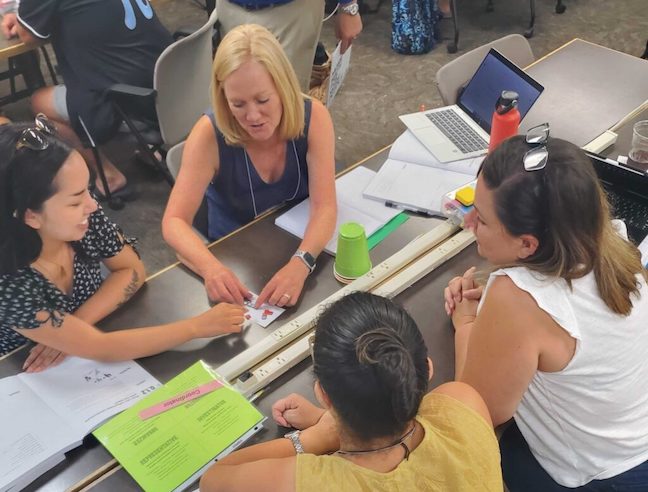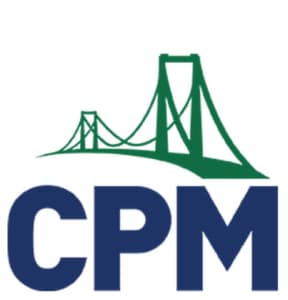May 2023

As an educator, I teach students life skills such as perseverance and self-compassion through mathematics, but how often do we push our own growth in those same ways? Once we find what “works” for us, we get comfortable and often become complacent.
Trying new things is simultaneously exciting, motivating, confusing, and exhausting. Change is hard, even if we know what is working for us may not be what is best for student learning and gaining a sense of belonging in math.
The good news is there is so much great information out there from so many incredibly creative educators that we do not have to start from scratch! If your social media or inbox looks anything like mine, it is full of saved ideas that you want to try in your classroom.
Most recently, I have been trying to incorporate side-by-side assessments (see Tucker’s 2020 book or 2022 blog post), a way to evaluate student work in partnership with the students rather than assigning a grade by myself. When I read that side-by-side assessments bring students into the grading process during class time, it seemed like a great practice, on paper. It matches my beliefs about how assessment should inform student learning rather than only quantify it. In reality, though, even after ample trial-and-error and tinkering on my part, I am stumbling through incorporating side-by-side assessment into classroom routines. Still, my work towards this equitable practice allows me to model for students what perseverance and self compassion look like as I try something new and difficult.
Trying new things that align with our values will often uncover other areas for growth in our current practices. For example, while I worked to make time for conferencing with individual students, I simultaneously uncovered the learned helplessness I previously enabled by being readily available to help students with the raise of a hand. Was what previously worked for me best for the students? Or, had I reverted to what was easiest for me? Going forward, how can I do what is best for student learning and still have a healthy work-life balance? I will say it again: IT IS HARD! Here are some guidelines that I keep in my back pocket as I try new things in my classroom:
- Invite your students to fail with you (Tucker, 2020). Students must see a model of learning through failure— that’s math! I am taking some information I already have, combining that with new information I have been given, and applying it to my specific context; this is the ultimate showcase of real-world learning. Invite students to grow with you.
- Journal what went well, and what you might change for next time. Make this easy for you! I keep an electronic journal in a Google Doc, but this can also be done in a personal notebook, or by adding comments or sticky notes (physical or digital) to your lesson materials. Even better, take note of what students say went well or needs improvement, and save those, too.
- Stick to your values. Reflect on the values that guide you to try something different. Write them down. Post them in your room. Share them with students. Why do you choose to try new things, even if they do not work well the first few times? What do you believe about students, and about how schools should serve them?
- Work in bites you can chew. Things are going to pop up that you did not take into consideration. Expect it, and re-focus on one or two simple things you can improve next time. Burnout is never the goal, and we often have to be intentional to avoid it. New practices take time, and you work at your own pace; we know that is true for students, so allow that same grace for yourself. Teaching kids is an exceptional privilege and a behemoth task. If you are like me and a lot of other teachers dedicated to ongoing professional learning, you have likely noticed that your practices do not perfectly align with your beliefs and values. We all have room for growth. I hope this encourages you to take some time to reflect and pick one thing you want to improve this semester. We deserve to work in ways that fulfill us. Allow your students to join you as you try, fail, and try again.
References
Tucker, Caitlin (2020). Balance with blended learning: Partner with your students to reimagine learning and reclaim your life. SAGE Publications.

Jennifer Moriarty
Kansas City, MO, trc-jennifermoriarty@cpm.org

